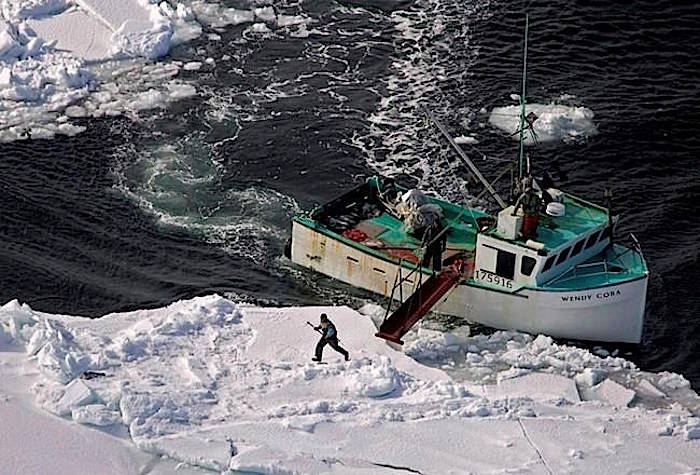Hungry East Coast seal populations have surged in recent decades, spurring calls for an increased seal hunt — and even a possible cull — to protect fragile caplin and northern cod stocks.
“If you don’t protect the ecosystem in controlling some of the top predators in the food chain, then something’s going to go out of whack,” said Eldred Woodford, president of the Canadian Sealers Association.
The Northwest Atlantic harp seal population is estimated at about 7.4 million animals — almost six times what it was in the 1970s, according to the federal Department of Fisheries and Oceans.
Grey seal numbers in the Gulf of St. Lawrence have grown from about 5,000 animals in 1960 to an estimated 98,000 in 2014, according to the department.
The number of commercial sealing licences, meanwhile, has plunged in Newfoundland to 4,558 last year from 11,146 in 2009, say preliminary federal statistics.
It’s time the federal government considered a cull on seals, Woodford said in an interview.
“Certainly we’re going to have to start entertaining it and looking at it.”
Woodford said he never wanted to promote the practice of killing harp or grey seals outright for the sake of limiting their respective effects on caplin and northern cod stocks.
“I felt it would be a shame to destroy a natural, renewable resource for the sole fact of controlling the population. We should be controlling it with a commercial activity where the people could utilize the animals and gain some benefit from the resource.”
Only about 70,000 harp seals were landed from the 2017 quota of 400,000, Woodford said, a trend of low harvests over the last several years. The price has hovered around $35 for the highest quality pelts, far below heady values of three times that much seen before international markets dried up over the last 15 years.
Animal rights groups drew celebrity support from the likes of Paul McCartney and Jude Law in sustained campaigns against commercial sealing. They say it’s an unnecessary cruelty propped up with government support that should be redirected.
Proponents says it’s a humane, sustainable and regulated hunt that’s unfairly targeted compared to the pork, poultry and other domestic meat sectors.
Countries which ban imported seal products now include the U.S., Mexico, Europe, Russia and Taiwan.
Federal Fisheries Minister Dominic LeBlanc is expected to make an announcement soon on the northern cod fishery. Stocks collapsed off Newfoundland and Labrador before a sweeping commercial moratorium threw thousands of people out of work in 1992. They had been slowly recovering but the latest updates suggest a 30-per-cent drop over last year.
Fisheries scientists point to natural mortality fluctuations.
Fishermen have long complained that grey seals rely on cod for a good portion of their diets, while harp seals eat vast amounts of caplin — the small fish that help sustain cod and several other species.
LeBlanc said last week in the House of Commons that seals are a “significant challenge” with no easy solutions.
Officials in his department, however, said in an emailed response that no drastic population measures are imminent.
“The department is not considering a seal cull at this time.”
Nor is it planning to lift a freeze on new commercial sealing licences in Atlantic Canada imposed 15 years ago when prices were high and there were many new entrants.
“The freeze on new commercial sealing licencing will remain in effect for the 2018 season,” it said.
Fisheries officials plan to discuss next moves on that issue with harvesters throughout the region this fall when the Atlantic Seals Advisory Committee meets.
Woodford said the number of active sealers has dropped in part because many with licences aged out of the industry.
“We’ve got to reopen it and allow the younger blood back into the game.”
Sue Bailey, The Canadian Press



